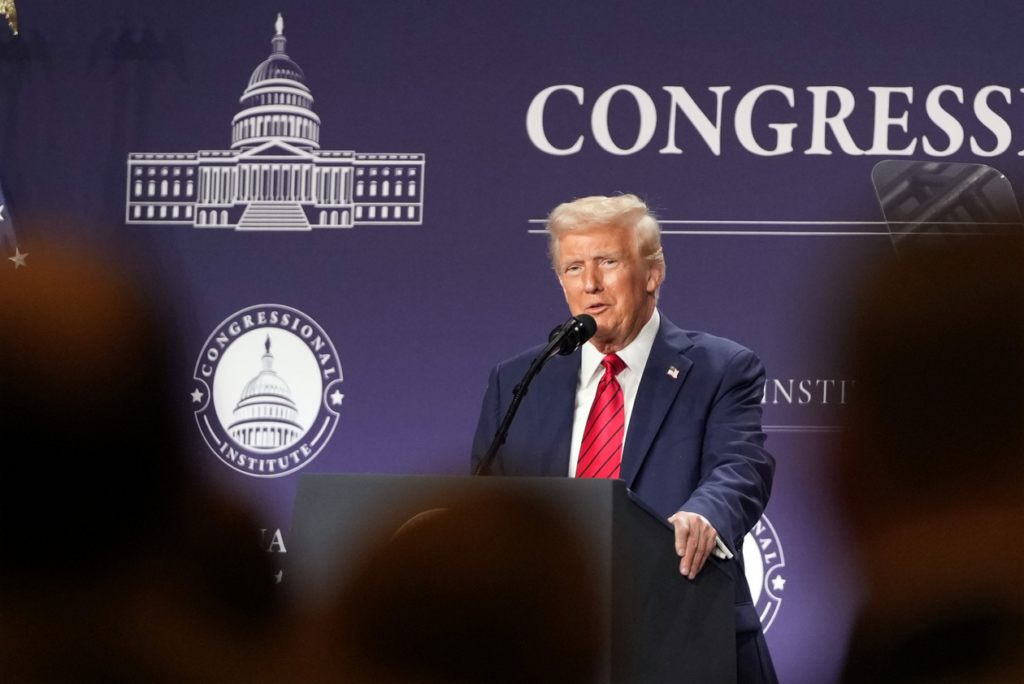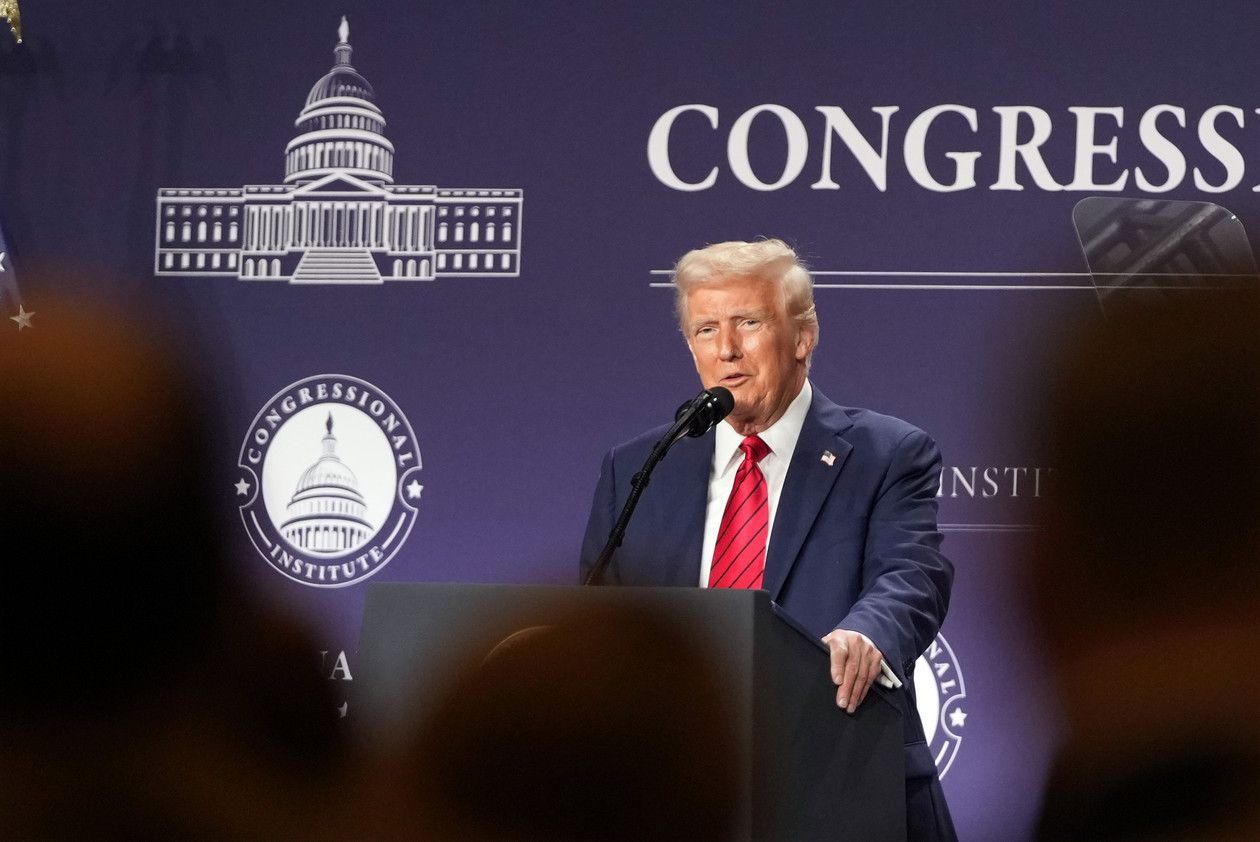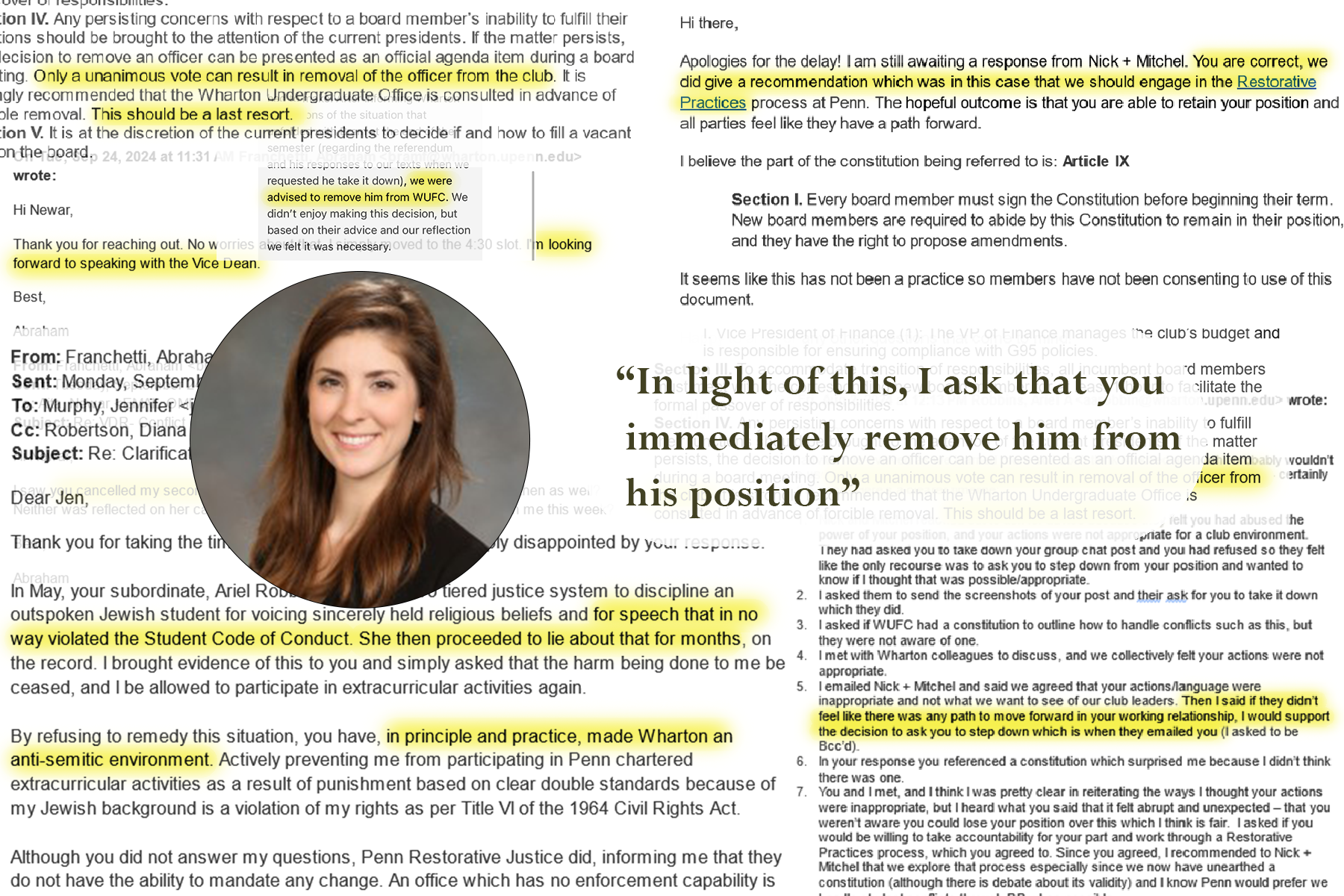
An explanation of the constitutionality of impoundment
Photo Credit: Mark Schiefelbein/AP
By Sarah Mester
President Trump’s Executive Office of the President announced on January 27 that “Federal agencies must temporarily pause all activities related to obligation or disbursement of all Federal financial assistance” with “financial assistance for foreign aid, nongovernmental organizations, DEI, woke gender ideology, and the green new deal” being specifically called out. By January 29, a district judge for the U.S. District Court for the District of Columbia had issued an administrative stay halting the implementation of the memo and the order was rescinded the same day.
It took little time for a discussion about the constitutionality of the move to begin, with numerous voices weighing in. Ilya Somin, a Professor of Law at George Mason University, wrote an analysis of the situation on the well-respected legal blog called The Volokh Conspiracy. Steve Vladek, a Professor of Law at Georgetown University Law Center, also wrote an analysis on his blog One First (referencing the address of the Supreme Court). Both of these posts served as an outline for this summary and can be useful for anyone looking for further explanation and reading on the topic.
When a President refuses to spend the funds allocated by Congress for various programs, the President has impounded those funds. However, according to Article I, Section 8, Clause 1 of the U.S. Constitution, Congress “shall have Power To lay and collect Taxes, Duties, Imposts and Excises, to pay the Debts and provide for the common Defence and general Welfare of the United States”, which is known as the “spending clause”. Under the Spending Clause, Congress has the power to allocate federal funding via legislation, not the President. Although some executive branch officials have argued that Article 2, Section 3 charging that the President “shall take Care that the Laws be faithfully executed” could provide a constitutional support for impoundment, the argument has never been taken up.
Despite the Spending Clause likely supporting the unconstitutionality of impoundment, no ruling on the constitutionality of the practice has ever been made and every president up until Nixon could (and did) impound funds, although Nixon used the practice more frequently. It was this impoundment spree that spurred the writing of the Impoundment Control Act of 1974 (ICA). Under the ICA, a President can only temporarily pause specific funding for a maximum of 45 days while a request to Congress is considered. President Trump did not submit such a request and the wide range of the funding pause meant that such a request would have been unlikely to succeed.
Since the issue of impoundment was solved by the legislative branch, the issue of impoundment has never been before the Supreme Court, although a related topic known as the line-item veto has. The Line Item Veto Act of 1996 allowed the President to veto specific lines of budget bills—effectively impounding those funds. The Supreme Court ruled in Clinton v. City of New York (1998) that the act was unconstitutional and that the vetoing of specific line items should be considered legislating, which is a power given only to Congress and not to the President. A case also arose out of Nixon’s impoundment of Environmental Protection Agency funds, although the ruling in Train v. City of New York (1975) was statutory and did not reach the question of the constitutionality of impoundment.
If litigation surrounding President Trump’s memo eventually made its way to the Supreme Court, it is likely that Clinton v. City of New York would be relevant. However, even without that case, widespread impoundment of federal funds would likely be ruled unconstitutional on the basis that the Spending Clause gives the power to allocate funding to Congress and a President wielding that power is a violation of the separation of powers enumerated in the U.S. Constitution.
Sarah Mester is a senior in the College studying Political Science and Classics from San Francisco, CA. She’s the Assistant News Editor for The Pennsylvania Post. Her email is smester@sas.upenn.edu.




